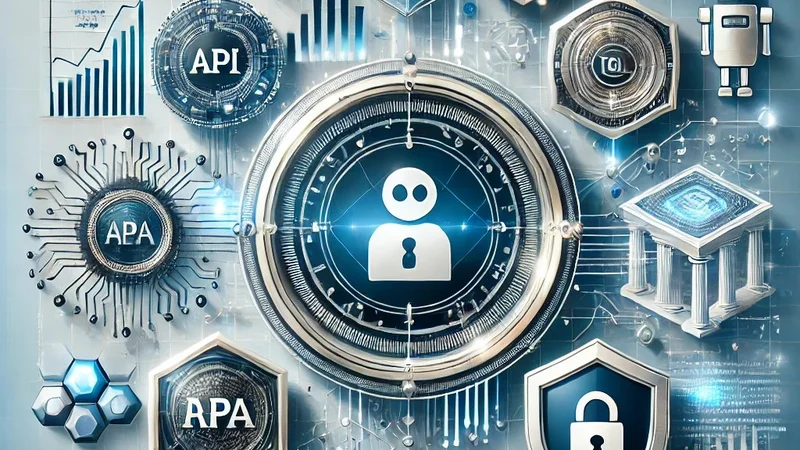How virtual command center can support financial institutions (FIs) business continuity
Acknowledge, why virtual command centers are fundamental to further developing FIs' functional flexibility and business coherence inside the post corona virus world.
•
Feb. 28, 2022

Acknowledge, why virtual command centers are fundamental to further developing FIs' functional flexibility and business coherence inside the post corona virus world.
COVID-19 has exposed systematic shortcomings within legacy command centers and control systems to support economic institutions' business continuity efforts (FIs) during times of crisis. Many didn't meet basic business and technology needs. They were also built on the idea that key IT staff members are often physically brought together to manage the response. What if the crisis's character prevents you from gathering within the same location or physical gathering at all?
Many institutions developed today employed systems after the 9/11 terrorist attacks. These systems must modernize again to fulfill the present business and technology needs of remarkable scale and speed, to keep the enterprise running as well as to return out of the crisis stronger than previously. Additionally, FIs must also cater to evolving regulatory pressure to demonstrate control over their increasing business, cyber, and technology risks.
The virtual command center (VCC) is a functional idea that expands upon a mature IT administration operation state, coordinating it with a vivid connection layer to look up and run a practical functional remote other option to the standard brick-and-mortar facilities.
The VCC represents a huge change in crisis management whose time has come. The shape and performance of command centers should find advanced mechanical real factors and supply an immersive encounter that drives imaginative cooperation when it is important most.
Today's legacy systems: a desire to modernize
Even before COVID-19, the requirement to boost command center resiliency had become a degree of emphasis. The movement of critical business functions (CBFs) and their supporting infrastructure to the available public cloud have had institutions looking to modernize command centers and transition to detached, external control systems capable of managing complex IT ecosystems from the surface.
While some institutions have embraced continuous automated integration/continuous development/continuous testing (CI/CD/CT) methods to manage these ecosystems more agile, most still depend upon legacy methods developed over a decade ago. For years, hyper-redundant Tier 1 facility is the muse for managing complex day-to-day business and technology cycles and enabling a gentle stream of the latest capabilities to shield business applications and CBFs.
As activity has migrated to the available public cloud, the challenges to those legacy-based command centers, command-and-control systems, and crisis-management processes became more evident. Normal issues that limit their effectiveness include:
• A reliance on divided inheritance tools and unprepared conditions to deal with the complexities of advanced applications and complex information constructs.
- Limited AI capabilities, like the flexibility to self-diagnose and self-heal
• an inability to scale flexibly with request and deal with a plenty of connected devices.
• A reliance on human and manual information, which eases back dynamic. - Collectively, these problems manifest themselves in ways in which customers, workers, and operations are felt.
• Longer help-desk wait times cause failed customer interactions and lower customer- and employee satisfaction rates.
• A inability to incorporate with inner and outside framework and organization controls and third-party transporter abilities and troubleshoot problems in complex ecosystems. - Persistent difficulties in making informed decisions and solve incidents because of the absence of 360-degree ecosystem views.
• Challenges satisfying regulators of adequate controls over the business, cyber, and technology risks.
Corona virus has uncovered two other huge issues with those inheritance frameworks:
- The relatively static, resolute nature of on premise frameworks supporting command centers are loaded with choke points, which might dissuade an establishment's capacity to respond to crises in a nimble and flexible way.
- Those systems don't act at supporting IT teams once they have to work remotely.
The VCC approach
The VCC approach represents a coordinated set of technologies, applications, and processes that apply the established principles of modern-day public cloud, automation, robotics, and containerization to navigate uncertain terrain during a business disruption. It can help overcome constraints, like geolocation, processing capacity, and network bandwidth, mainly static and inflexible in today's on premise systems.
The use of contemporary technologies might be spun up and managed by artificial intelligence (AI) and to see a highly augmented virtual reality (VR) setup. The VR technology bridges the humans and AI gap through a tangible, interactive space, interactive structure, and enhanced communication in a virtual world.
Various screens may be used by crisis leads and senior chiefs, while senior activities leads could have a more vivid encounter, taking manual responsibility for the command center remotely. Imagine, as an example, having the ability to slip on a pair of VR goggles or walk into an equipped augmented reality room (ARR) in your home office and see everything on your work desktop — and others on your team — in real-time.
The VCC requires the successful implementation of this automation level, which is wholly obsessed with the institution having a robust foundation in modernized operations (ModOps) across the broader organization.
Time for a brand-new command center approach
COVID-19 has uncovered deficiencies inside the manner in which inheritance command centers utilized by financial institutions keep up with business progression during a crisis, however actually, change has been an extended opportunity approaching.
As the use of infrastructure-as-a-service, platform-as-a-service, and public cloud solutions drives institutions further into the general public marketplace, the power to retort with agility to ever more sophisticated cyber, technology and environmental threats will become more important.
With its built-in abilities to leverage AI, VR, and other capabilities, the VCC approach represents a paradigm shift that might help institutions manage through all styles of threats — including pandemics — more effectively for generations to return.
Related

Technology and Automation in Accounting and Auditing: Adapting to a Digital-First Future
The world of accounting and auditing is being reshaped by cutting-edge technologies, bringing opportunities and challenges for professionals and businesses alike. From blockchain to artificial inte...
Read more
Financial Reporting and Analysis in 2024: Key Updates You Need to Know
Financial reporting today isn’t just about crunching numbers; it’s about telling the full story behind a company’s performance, future potential, and impact. With new standards emerging, evolving a...
Read more
Navigating the Evolving World of Audit and Assurance
The world of auditing is not what it used to be—it's faster, smarter, and more focused on risk and fraud than ever before. With new technologies and methodologies reshaping how audits are done...
Read more